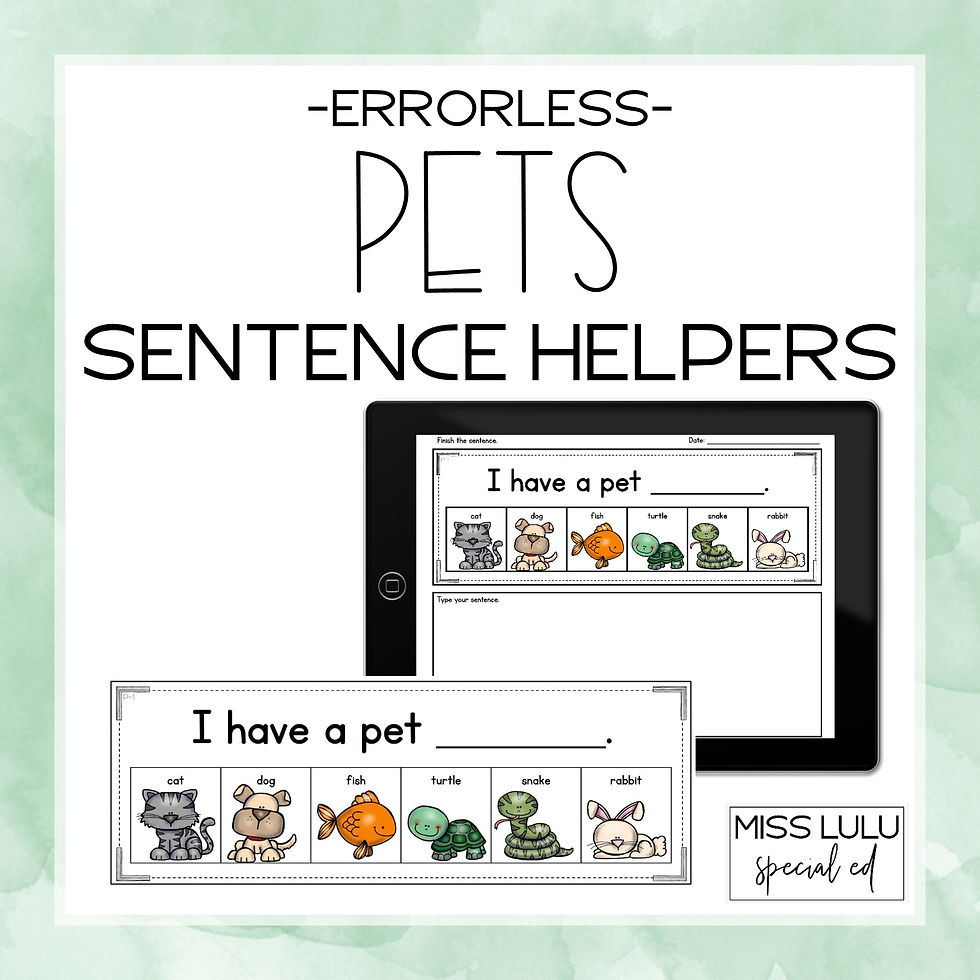3 WAYS TO WORK ON WRITING EVERYDAY
- Laura
- Oct 2, 2022
- 3 min read
Updated: Oct 16, 2022
Reading, writing and thinking are some of the most functional skills a student can leave school with. Think about all the opportunities you have to write each day:
adding an event to your calendar
texting your friend or significant other
writing a grocery list
sending an email to your employer
leaving a note for your roommate
filling out a form
doing a google search for something online
writing in your journal
and so on...
Writing is an essential skill to be successful in life. As teachers, we need to ensure that writing is a core skill we teach in our classrooms, whether we are general education teachers, resource teachers, SLPs, or special education teachers. All students need to be able to write.
Here are three quick ways that you can encourage students to write every day in your special education classroom.

1. Daily journal prompt
I love journal prompts because they can be informal. It's easy to pick topics that are motivating and exciting for your students. There's no length requirement, you're not obsessing over grammar and mechanics, and students are able to write what they want. A daily journal prompt is a great self-start or bell work activity.
Even your students who are emergent writers can participate with the use of picture supports, drawing, alternative pencils, or scribed writing. To make it more engaging, I like to introduce the prompt with a short video or picture.


2. About my day home school communication
What parent doesn't want to hear more about what their child did in school that day? For our students with more significant disabilities, that communication can be limited. A great way to work on writing in your classroom is for students to complete a daily school-to-home communication sheet.
You can create a simple communication sheet and include as much or as little as you'd like. I liked to include space for students to write a sentence about one thing they did that day, what they ate for lunch, and something they are working on (goal setting). We took a few minutes at the end of each day to fill these out. For students who need to write less, you can incorporate visual choices for them to circle or mark on their papers.
3. Independent writing station
I loved having an independent writing station in my classroom because it was a way to work on two skills simultaneously- independent work skills and writing. Provide a variety of writing tasks that students can choose from. Ideally, you will pair this station with explicit writing instruction, but even if you're not there yet, you can get started with an independent writing station. The key is having a variety of differentiated tasks. Some examples of tasks include writing basic sentences, paragraphs, lists, stories, notes or cards, or even emails. You can even provide tasks to match your curriculum themes or seasonal events.
Here's an example of my resource, Let's Write a List. It provides multiple levels for students to work on list writing in a station format. This is a great task to incorporate into your independent writing station. You can try it out with this freebie.

Another task I love to use during our independent writing station is Errorless Sentence Helpers. They come in three phases, so you can easily differentiate for various students. If you want to try them out, I have a few free versions in my store and an exclusive freebie in the resource library.


Teachers, I challenge you to spend the next week trying to incorporate at least one writing activity daily. I'd love to hear how it goes! Leave me a comment below or tag me on Instagram @missluluspecialed.
Happy writing!







Comments